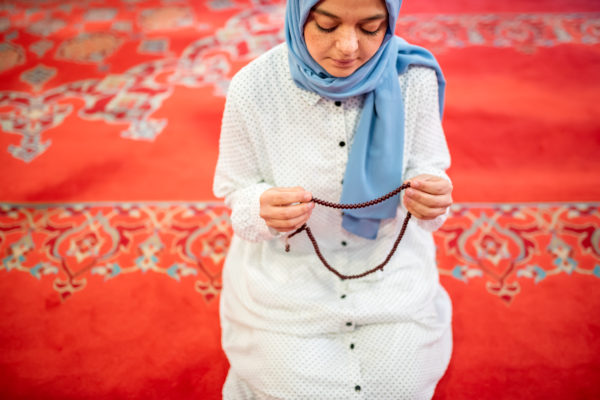Emotions, especially heavy ones like sadness, anger, and worry, are like stones in an imaginary backpack. If we don’t let them out, they will weigh us down.
Why It’s Important To Let Our Children Express Their Emotions And Cry: A Parenting By Connection Perspective
Emotions, especially heavy ones like sadness, anger, and worry, are like stones in an imaginary backpack. If we don’t let them out, they will weigh us down.
We’ve all been there. Our son/daughter (or perhaps both!) has burst into tears, or better yet, begun a mighty tantrum, and we just want it to STOP. So we pull out a whole army of tricks – Shushing: “Shh, shh, it’s OK, it’s just a small…”, Ignoring: “I’m not going to talk to you until you stop crying and start using your proper words”, Explaining: “But you know that if you don’t brush your teeth they will rot, remember we talked about it? You brushed really well yesterday, why is it such a big deal today, it is the same…”, Anger: “Enough! Stop crying now!”, and Distraction: “Oh look, there’s a bird!” or “Here, watch Peppa Pig” and I’m not sure what to call this last one (here have something to fill your mouth so you can’t cry?) but let’s call it bribery: “Here, have a sweet, it will make you feel better”.
If we take a closer look at these, do these tactics even really work? I mean, long term work? I know personally speaking, shushing and ignoring just makes them cry and fuss even louder! Explaining doesn’t work when they clearly are not taking it in, and just frustrates us even more, and distraction may work short term, but lo and behold they will be back with more tears about something else very soon! The last one’s my favourite – I always wonder what would happen if every time they were feeling sad, someone said, “Aww it’s OK, here have a samosa, it will make you feel better!” Lots of comfort eating, obesity and heart disease, that’s what!
So what should we do?
As you may have guessed by the tone of the article so far, stopping emotions should not really be our aim! Emotions, especially heavy ones like sadness, anger, and worry, are like stones in an imaginary backpack. If we don’t let them out, they will weigh us – and our children – down. If, on the other hand, we welcome the emotion and stay close by and be loving while our children cry and tantrum, we are helping to provide a safe environment for them to really feel it and let it go. Once released, the backpack is so much lighter and the change is obvious in our children – they are lighter, more loving, more co-operative and just happier. Isn’t that what we want from our children, to be happy?
To use another analogy, if things are kept bottled in, it can result in explosions of rage, anger, and pity when the pressure gets too much. Alternatively, if left in the bottle for too long, things can get flat and tasteless; in other words, anxiety or depression as a result. What we aim is the middle range, where there is a bit of a fizz and sparkle! This is life in its essence – emotions, good and bad.
If you don’t believe me, think back to when you last had a cry. When things got too much, and you just couldn’t hold it back anymore and you sobbed your heart out. How did you feel after? Most likely, you felt lighter and more able to deal with things again. There is a reason why it is called a ‘good’ cry! So while we hold on to that, let us be able to offer that to our children too.
The science behind tears
Studies have looked at the component of different types of tears – happy tears, sad tears, even tears when cutting onions! What they found was that in tears of sadness and upset, and only in this type of tears, a hormone called cortisol was present in the tears. Cortisol is a stress hormone and therefore when our children cry, they are effectively releasing stress from their bodies! When we prevent them from crying, however, by any of those tactics above – or perhaps even a combination of them! – we are effectively containing the stress within the body, which inevitably can have a detrimental effect.
In fact, there is a whole brain science behind it. I won’t go into the details but to put simply, there are two parts of the brain – the upstairs brain (which is to do with thinking, rationale, and short-term memory), and the downstairs brain (which holds out emotions and long-term memories). The upstairs brain is what we all want our children to be operating from, but when the downstairs brains are flooded with emotions, this part of the brain actually switches completely off. This is why you can talk to your children until you’re blue in the face, but none of it will actually sink in! The flood needs to be released (i.e. tears), and when and only when the downstairs brain is clear, will the upstairs ones start working again.
Why dislike ‘big feelings’?
So why is it that we want those big feelings to go away, and why is it that crying or tantrums irk us so much? A big part of it may be how our own feelings were dealt with when we were younger – we tend to parent the way we were parented and often they too did not know how to deal with big feelings, and so used all the above tactics also. After all, all this research was not necessarily around then, and definitely not as accessible!
This leads on to another big reason of why we can’t handle it. If we intrinsically believe that big feelings and emotions are not okay, then naturally we see it as our duty to keep our children happy all the time. Any sign of upset by them is taken very personally by us – that WE have done something wrong that they should be crying or having a tantrum like this, and therefore we try and stop them so that they (and we) feel fine again. What I love about “Parenting by Connection”, is their philosophy that it IS okay to feel sad, or angry and to cry and grieve; it is natural and actually very healthy! Therefore when our children do this, there is no need to stop it, but simply to let it flow and run its course, while we support them through it.
To wrap this up, I will leave you not with any conclusion of mine, but with the wise words of Imam Jafer Sadiq: “… Just see the advantage that accrues to the children from weeping. There is a fluid in the child’s brain which, if not I drained off, may cause trouble or illness, even the loss of an eye. The discharge of the fluid from its brain leaves it healthy and the eyes brighter. The child is benefited by weeping, while his parents in their ignorance, try to prevent his weeping by catering for his wishes, not knowing the benefits thereof…”
Shaheen Merali is a certified Parenting by Connection instructor who holds regular classes to teach the tools of this philosophy to other mums. This by no means implies that she is a perfect mum – it means she too is on a journey to be the best mum she can be and has stumbled across a method that she truly believes in, that fits in perfectly with Islamic beliefs, and when applied well – works like a charm! For more information, contact her on shaheen@mapero.co.uk. Alternatively, you can follow her on Facebook here.





